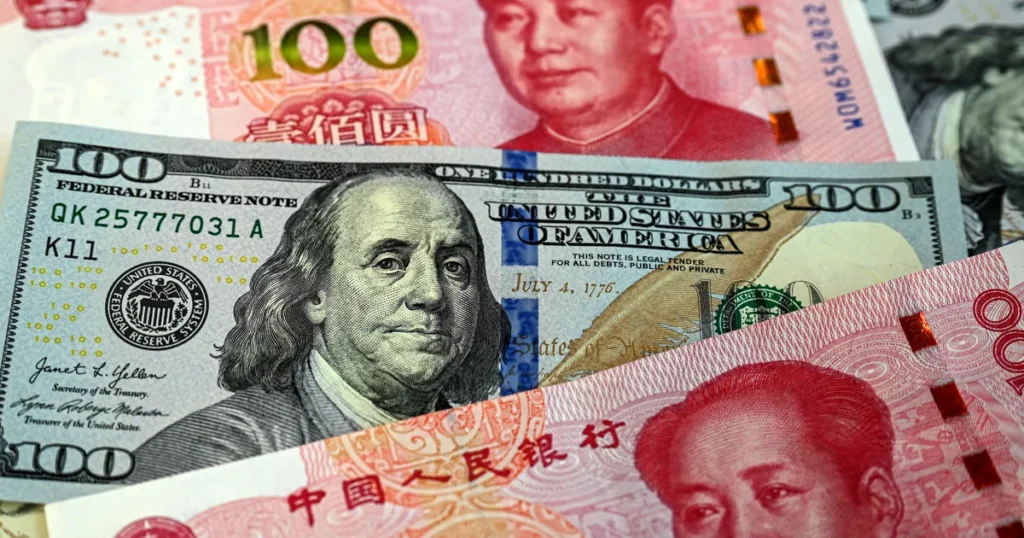
Washington D.C., April 16: In a bold escalation of trade tensions, the United States has imposed sweeping new tariffs on Chinese imports, with rates reaching as high as 245% on select items. The move, announced by the White House on Tuesday, is part of a renewed effort by the Trump administration to counter what it calls “unfair trade practices” and retaliatory actions by Beijing.
The White House fact sheet cited China’s recent export restrictions on critical raw materials, including gallium, germanium, and rare earth elements, as a major trigger for the new measures.
What’s Affected: Tariff Breakdown by Product
The tariffs are far-reaching, targeting a wide range of consumer and industrial goods. Here’s a closer look at the new rates on Chinese imports:
| Product Category | New Tariff Rate |
|---|---|
| Syringes and needles | 245% |
| Lithium-ion batteries | 173% |
| Squid (seafood) | 170% |
| Wool sweaters | 169% |
| Plastic dishes | 159% |
| Toasters | 150% |
| Electric vehicles | 148% |
| Toys, dolls, puzzles | 145% |
| Vitamin C | 145% |
| Aluminum foil | 75% |
| Car wheels | 73% |
| Semiconductors | 70% |
| Metal furniture | 70% |
| Car door hinges | 67% |
| Laptops | 20% |
| Children’s books | 0% (Exempt) |
Medical Equipment Under Fire
Among the hardest-hit items are syringes and needles, now facing a 245% tariff, more than doubling their original cost. These items were previously targeted by both the Trump and Biden administrations in efforts to boost domestic manufacturing of medical equipment.
The tariffs, according to officials, aim to prevent the U.S. from being vulnerable to China’s control over critical healthcare supply chains a vulnerability exposed during the COVID-19 pandemic.
Electronics & Battery Industry Braces for Impact
China is a major supplier of electronics, including lithium-ion batteries, which now face a 173% duty. This development is expected to hit electric vehicle (EV) makers and electronics manufacturers particularly hard, increasing production costs and possibly pushing up consumer prices.
Although smartphones and laptops were previously at risk of tariffs up to 145%, they are currently partially exempt under revised customs guidance. Laptops now face a 20% tariff, largely due to penalties associated with the “fentanyl-related” provision, though smartphones have escaped direct additional charges for now.
Consumer Goods: Toys, Clothes, and Furniture Take a Hit
Traditionally low-cost imports like toys, puzzles, and dolls, which once entered the U.S. tariff-free, will now be taxed at 145%, making them significantly more expensive for American families. Similarly, wool sweaters and other apparel are now subject to a 168.5% total duty, a result of combined base tariffs, prior Section 301 tariffs, and new retaliatory layers. Furniture, metal items, and home appliances are also impacted, with rates between 67% and 75%, depending on the category.
Tech Industry Faces More Pressure
With semiconductors now under a 70% tariff, U.S. technology companies — already reeling from global chip shortages — may face additional cost burdens. The move is designed to reduce reliance on Chinese components, but could further delay manufacturing timelines and inflate prices.
Trump Administration’s Stance & Trade Policy Goals
These new tariffs align with President Trump’s “America First Trade Policy,” which aims to protect domestic manufacturing, reduce trade imbalances, and pressure China into more favorable trade terms.
White House Press Secretary Karoline Leavitt noted that while President Trump is open to a future trade agreement, the administration believes Beijing must make the first move by ending its retaliatory tariffs and easing export restrictions on key materials.
Why This Matters
The tariff structure is complex, layered, and highly dependent on product origin and classification. Businesses importing goods from China will need to carefully analyze their supply chains and pricing models to assess the real impact.
Industries such as automotive, electronics, medical devices, and retail are expected to be the most affected, with companies likely to pass some of the increased costs onto consumers.
For more news subscribe to questiqa.com

